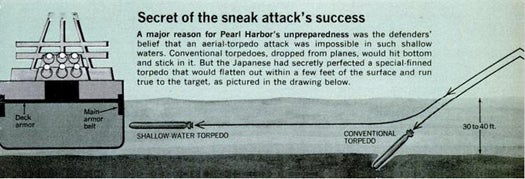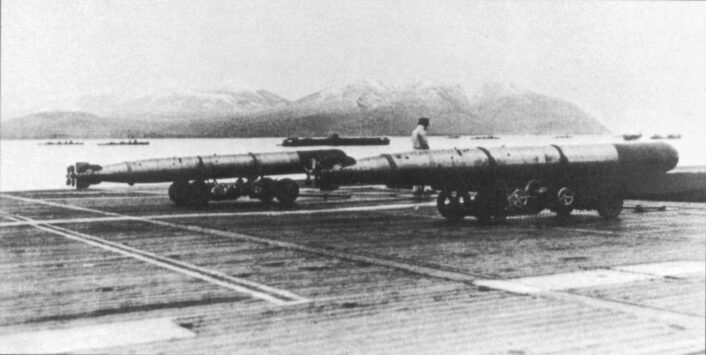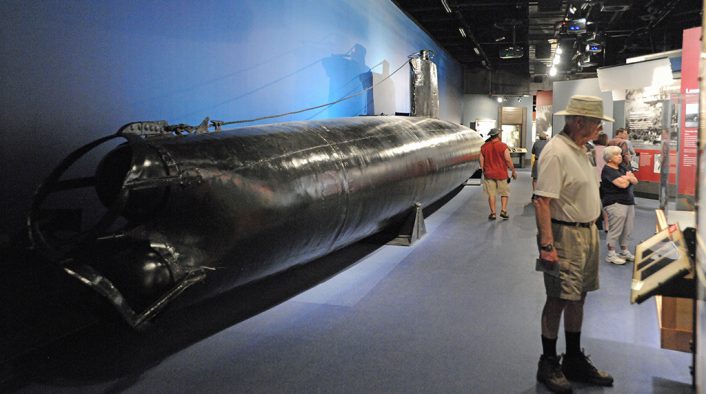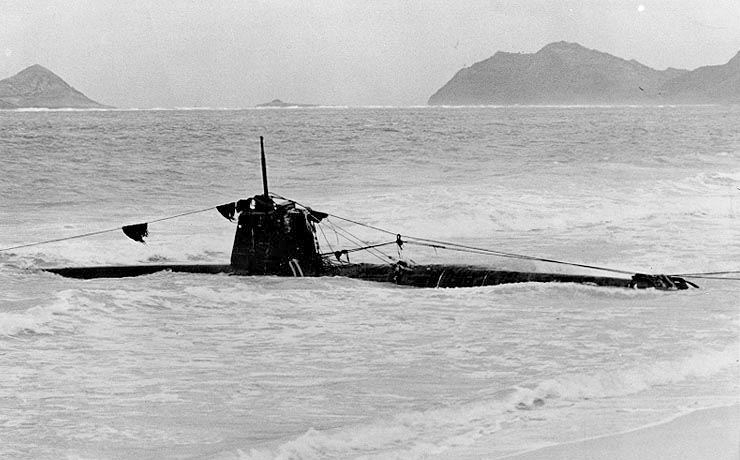Secret Mini-Subs, Shallow Water Torpedoes and “Stealth” Aircraft Carriers Helped the Japanese Achieve Surprise in “Secret Operation Z”.
In many ways, the Japanese attack on Pearl Harbor on Dec. 7, 1941, was the perfect military operation. The attacking Japanese task force achieved almost complete tactical surprise, remarkably evaded detection during a 3,000+ mile sortie, successfully employed specially developed secret weapons against U.S. forces and managed to escape with minor losses.
For their efforts and initiative, the Japanese 1st Air Fleet destroyed or damaged 19 U.S. Navy ships, including 8 battleships at Pearl Harbor. Estimates suggest that 75% of the U.S. aircraft on the ground at Hickam Field near Pearl Harbor were destroyed in the attack. The attack also took 2,403 lives on the American side. This death toll on American soil would not be approached again until the 9/11 terror attacks in 2001 that claimed the lives of 2,996 people, mostly Americans.
This remarkable military blow was dealt to the U.S. by a small island nation that had, only seven decades earlier, still been ruled under an ancient feudal hierarchy that began in the year 1185 and ended with the Meiji Restoration in 1868.
How did the Japanese manage such a successful force majeure against the Americans?
“Let your plans be dark and impenetrable as night, and when you move, fall like a thunderbolt.” ― Sun Tzu, The Art of War.
The short answer is that the Japanese were well prepared, enjoyed optimal tactical circumstances (if not favorable geography) and were extraordinarily lucky at Pearl Harbor. A corollary of Japan’s daring initiative at Pearl Harbor was a significant measure of bad luck for the Americans. But it could have been so much worse. Had even one of the U.S. Navy’s seven aircraft carriers been at Pearl Harbor on Dec. 7, 1941, the outcome for the Americans could have prolonged the war in the Pacific and further threatened the mainland United States.
The Dec. 7, 1941 Japanese attack on Pearl Harbor began on Nov. 26, 1941, when Admiral Chuichi Nagumo lead the Japanese First Air Fleet, the largest aircraft carrier strike force in history at the time, toward Hawaii as a contingency against the failure of negotiations with the U.S. to avoid war in the Pacific. It is noteworthy that the Japanese First Air Fleet was, at the onset, a contingency force, not already tasked with the certainty of an operational strike against Pearl Harbor. The First Air Fleet was Japan’s “plan B” to assert dominance against the Americans in the Pacific.
History shows that attacking Pearl Harbor was a costly decision for Japan. A staggering 2,600,000-3,100,000 Japanese would die in WWII between late 1941 and Japan’s capitulation on September 2, 1945. Japan remains the only country in history to have been subjected to an operational strategic nuclear strike, two in fact, at Hiroshima and Nagasaki.
The first phase of the Pearl Harbor attack, the clandestine movement of a massive 67-ship armada, to within striking range of Hawaii, was perhaps the most difficult phase of “Secret Operation Z”. Bad weather favored the Japanese task force, with storms hindering U.S. surveillance of the ships for much of the way. The task force was under orders to immediately sink any allied vessel it encountered to prevent them from relaying intelligence back to U.S. forces.
The strike itself comprised 353 Japanese aircraft, of which Japanese losses were only 29 aircraft. But by war’s end, every one of the 67 Japanese ships from the original task force would be sunk by the allies except one.
Two Japanese secret weapons employed in the attack on Pearl Harbor include the highly successful shallow water variant of the Japanese Type 91, Mod 2 air-delivered torpedo and the largely unsuccessful Type HA-19 A Kō-hyōteki-class midget submarine.

Type 91 Mod 2 shallow-water torpedo was used to advantage in the shallow waters of Pearl Harbor. (Photo: Popular Mechanics)
The Japanese Type 91, Mod 2 air-dropped torpedo used several novel technologies to improve high speed delivery and shallow water performance. Wooden stabilizer fins were attached to the front of the torpedo for its freefall phase before entering the water. The fins prevented excessive roll, pitch and yaw of the torpedo once released from the delivery aircraft, a Nakajima B5N.

The torpedo was further stabilized in flight after release by the angular acceleration control system, which prevented excessive rolling of the torpedo once released. This reduction in roll combined with directional fins on the tail that maintained a more horizontal angle of attack after release was largely responsible for the torpedo’s outstanding shallow water performance.

But not all of the Japanese secret weapons employed at Pearl Harbor were successful.
The Type HA-19 A Kō-hyōteki-class two-man midget submarine was an abject failure during the attack. The miniature submarine was supposed to enter the harbor and use its two torpedoes to attack U.S. warships.
As it turned out, the sub’s navigational equipment, specifically its gyro-stabilized compass, were inoperable when it was launched, and its two-man crew could not repair it in time to navigate into the harbor. The crew tried multiple times to enter Pearl Harbor, but struck reefs on each attempt. On two occasions during the attempted submarine infiltration of the harbor, the mini-sub was attacked by U.S. Navy vessels using depth charges. One of these attacks knocked one crewman unconscious.
When it finally became clear the mini-sub could not enter the harbor, the crew attempted to return to the Japanese ship that had launched them. But damage from the depth charge attacks caused battery damage that emitted fumes. The two crewmen eventually lost consciousness from fumes and the mini-sub washed up on a reef where they then set scuttling charges to destroy the submarine. But in a last stroke of failure, seawater prevented the scuttling charges from detonating, and one of the two crewmen drowned swimming to shore from the reef where the sub was stranded. The U.S. Navy later recovered the sub after the Army Air Corps had unsuccessfully bombed it. It went on to become a curiosity to help sell war bonds and finally an exhibit at the National Museum of the Pacific War in Fredericksburg, Texas.










